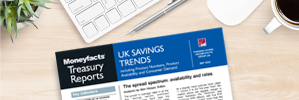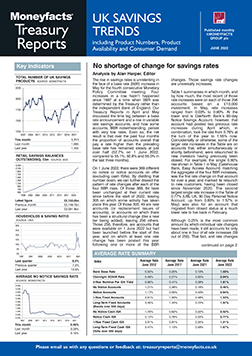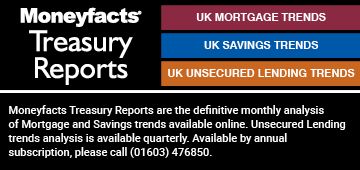Rachel Springall, Finance Expert at Moneyfacts, said:
“Fixed rates are rising at an astounding pace and month-on-month we have seen the average one-year fixed bond rate see its biggest monthly rise of 0.29%, breaching its previous record-rise from over ten years ago (0.27% in July 2008). Savers who are looking to secure a guaranteed return over the next year will find a stark difference to short-term fixed returns, with the average one-year bond rate now more than three times higher than recorded in June 2021.
“Challenger banks are securing the most prominent positions within the fixed bond market, with some making consecutive changes to their range during May. This vigorous competition led to a fall in the average fixed rate bond shelf life to 44 days, the lowest recorded since November 2021 (40 days). However, the fixed bond market was not seeing such uplifts to rates back then, as it was slowly recovering from the record low average rates recorded in April 2021. Longer-term fixed bonds also felt notable recovery during May, seeing the biggest month-on-month rise since July 2008 (0.35%) and now have the highest average return seen in over six years. Despite this, savers may not be comfortable investing over the longer term, particularly as the margin between the average one-year and longer-term bond stands at 0.44% and competition is rife on shorter-term options. ISAs are also on the up, but average returns remain higher on fixed bonds.
“The back-to-back Bank of England base rate rises are also making an impact on variable savings rates, but it is the challenger banks and building societies jostling for table-topping positions. The average easy access rate and notice rate stand at their highest levels since April 2020, with notice accounts experiencing their biggest month-on-month rise since August 2007. Easy access accounts are still well-sought after and, according to the Bank of England, during April there was an inflow into sight deposits of just over £2.2 billion, which is £15 billion so far this year. However, for time deposits there was an inflow of around £868 million.
“At a time of notable interest rate rises, and further murmurs of base rate rises to come, savers could find a notice account an appealing choice as they can get a slightly higher return than on an easy access account (the margin between the average easy access and notice rate stands at 0.48%) but avoid locking their cash away as they would with a traditional fixed bond. Due to the volumes of rate re-repricing seen in May, consumers and savings providers alike would be wise to keep a close eye on market movements in the weeks to come as rises could continue to dominate.”
Rachel Springall, Finance Expert at Moneyfacts, said:
“Fixed rates are rising at an astounding pace and month-on-month we have seen the average one-year fixed bond rate see its biggest monthly rise of 0.29%, breaching its previous record-rise from over ten years ago (0.27% in July 2008). Savers who are looking to secure a guaranteed return over the next year will find a stark difference to short-term fixed returns, with the average one-year bond rate now more than three times higher than recorded in June 2021.
“Challenger banks are securing the most prominent positions within the fixed bond market, with some making consecutive changes to their range during May. This vigorous competition led to a fall in the average fixed rate bond shelf life to 44 days, the lowest recorded since November 2021 (40 days). However, the fixed bond market was not seeing such uplifts to rates back then, as it was slowly recovering from the record low average rates recorded in April 2021. Longer-term fixed bonds also felt notable recovery during May, seeing the biggest month-on-month rise since July 2008 (0.35%) and now have the highest average return seen in over six years. Despite this, savers may not be comfortable investing over the longer term, particularly as the margin between the average one-year and longer-term bond stands at 0.44% and competition is rife on shorter-term options. ISAs are also on the up, but average returns remain higher on fixed bonds.
“The back-to-back Bank of England base rate rises are also making an impact on variable savings rates, but it is the challenger banks and building societies jostling for table-topping positions. The average easy access rate and notice rate stand at their highest levels since April 2020, with notice accounts experiencing their biggest month-on-month rise since August 2007. Easy access accounts are still well-sought after and, according to the Bank of England, during April there was an inflow into sight deposits of just over £2.2 billion, which is £15 billion so far this year. However, for time deposits there was an inflow of around £868 million.
“At a time of notable interest rate rises, and further murmurs of base rate rises to come, savers could find a notice account an appealing choice as they can get a slightly higher return than on an easy access account (the margin between the average easy access and notice rate stands at 0.48%) but avoid locking their cash away as they would with a traditional fixed bond. Due to the volumes of rate re-repricing seen in May, consumers and savings providers alike would be wise to keep a close eye on market movements in the weeks to come as rises could continue to dominate.”











